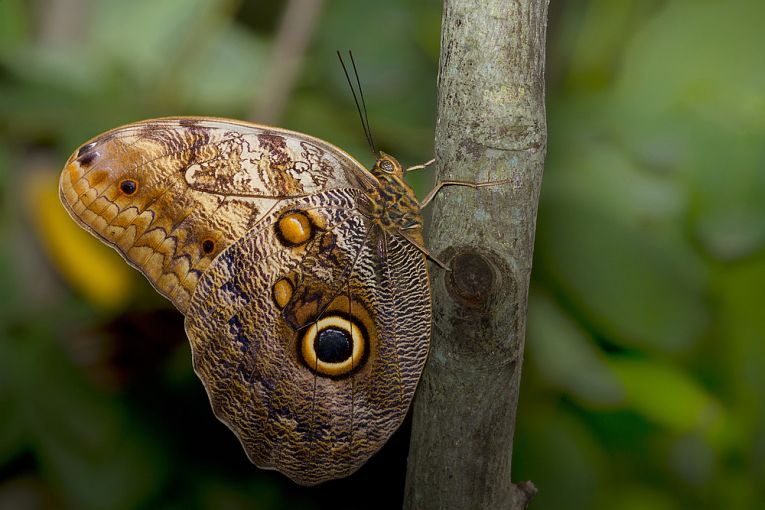Sebastiano De Bona, Janne K. Valkonen, Andre´s Lo´pez-Sepulcre1 and Johanna Mappes have explained mimicry. The eyespots of butterflies and moths can be seen currently in the peacocks of the Northern Hemisphere or in many other species (and phyla) worldwide. This research has proved that it is the mimicry of a predator’s eyes and not the flashing shock effect that frightens off birds. The researchers are at the Universities of Jyvaskyla, Finland and Universite´ Pierre et Marie Curie, Paris, France. The whole paper in its intricacy can be viewed in the Proc. Roy.Soc.B as Predator mimicry, not conspicuousness, explains the efficacy of butterfly eyespots
The birds concerned were great tits, Parus major with a computer display to present different prey patterns, with natural eye-patterns, images with no eyes and owl images. The normal reaction of a predator has been to respond in a startled manner, while the prey have an enhanced survival rate. Theories surround the circular shape of the eyes
, their conspicuous colour (producing a phobic reaction), the delay in the attack caused by predator information-processing.(sensory overload!)
This study avoids indiscriminate predator attack and concentrates on accurately simulating the pattern, not the predator. Where the butterfly eye-spot was used, those of Caligo martia, the Brazilian species of owl butterfly were especially suitable because of their resemblance to owl eyes (There are many American owl butterflies in this genus.) The pygmy owl, Glaucidium passerimum, face was also employed, both with and without eyes!
Intimidation by mimetic eyespots was effective in producing aversion responses. More contrasting colours in less natural spots created less aversion, while owls with eyes had more response than those without eyes. Bird predators (vertebrates) nearly all have eyes with a dark pupil and a light iris. Other studies found a 3-dimensuional sparkle marking in the eye was tremendously effective in mimicking a real eye. Only 3 birds of the 97 used were frightened enough to make a warning call, but this was in reaction to the eyed owl photograph.
The main point of the work was to indicate whether eyespots deter because of mimicry. The owl eyes model obviously works well for butterflies. Now, let us continue with these beautiful April peacocks in the garden, to see if they mimic another predator’s eyes! Perhaps the newer theory of a flashing, shocking and conspicuous effect might hold water with this 4-eyed
butterfly’s predators?
If you have ever wondered how those blue butterflies avoid the attentions of ants when they live inside their nests, this is a British experience of reintroduction of the large blue and ways in which they avoid ant predation!










